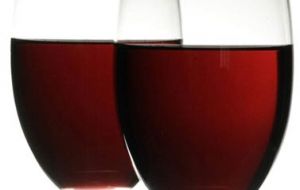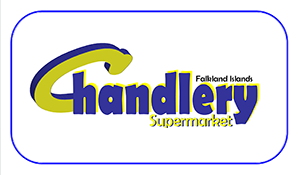MercoPress. South Atlantic News Agency
South American wines help overcome the global crisis
 Argentine, Chile, Brazil, Peru wines are rapidly displacing low and high priced competitors
Argentine, Chile, Brazil, Peru wines are rapidly displacing low and high priced competitors As the world grits its teeth and grabs another glass of something to chase the blues away, South American wine producers are watching exports bounce. International wine sales from places like Chile, Argentina, Brazil and Peru are up in the first quarter of 2009, and industry professionals are saying the crisis has been positive for them.
“For Argentina it¹s the right wine, at the right price, at the right time,” said Amelia Nolan of Argento, one of Argentina¹s best selling wine brands.
Already up 20% for the first part of this year, compared to 2008, the company aims to sell 700,000 cases in the year -- 8.4 million bottles.
Such targets might seem risky given current gloom. But Argentina has seen its quality wine exports rise by an estimated 9% in value and 10% in volume, in the first five months of 2009, according to Caucasia, a Buenos Aires based analyst.
The figures are in sharp contrast to France, which lost 29% in export values in the first quarter and 15% in volume according to French national agency, France AgriMer.
Nolan, along with about 100 other South American wine producers, is in France this week for the world¹s biggest wine trade show, Vinexpo. The fair is held in Bordeaux biannually and this year brings together 40,000 visitors and 2,400 exhibitors from 48 countries.
“We are definitely profiting from the crisis and growing in every single market we are in,” said Juan Somavia of Wines of Chile, the country¹s promotional body, speaking at the show.
Chile's export volumes are up, after a slow start in January and February by 20% in March, 16% in April and 23% in May. Overall export values are down about 11% for the first four-month period, but individual producers said they are profiting from higher demand and a weaker peso.
“In value terms my Chilean sales are up 50% for the first five months of 2009,” said Francois Lurton, a French producer with a small, high end Chilean vineyard.
Lurton, who also has vineyards in Argentina, Spain, Portugal and France, estimated that of his 50%, 30 percentage points was higher demand and 20 percentage points a weaker Chilean peso due to copper prices falling in August and September last year.
“The lower prices of both Argentina and Chilean wines are eating into sales from France and Spain,” he said.
Price is important in all markets, but so too is image, said Bernard Magrez, the Bordeaux-based wine billionaire with vineyards in Argentina and Chile.
“Buying a good Argentinean or Chilean shows you understand wine,” Magrez said.
South American producers are also benefiting from consumers preference for knowing what grape they are drinking.
The grape varieties of Malbec, Cabernet Sauvignon, Carmenere and Tannat -- traditional 'old world' grapes originally from France -- have found a second life in South America. They are known and liked by consumers, particularly in places like Denmark where sales of red Chilean Cabernet Sauvignon now regularly outstrip the French equivalent.
The kind of grape used in South America is also currently playing in its favour, to the detriment of Australia some say.
“When a grape variety gets very popular, like Australia¹s Syrah, a lot of it gets made and quality falls” said Michel Rolland, a French wine consultant who owns vineyards in Argentina and France. “It was the same with Merlot 10 years ago.” By contrast South American Malbec and the rest are currently seen as better quality.
US wine importer Bob Guinn of TGIC -- which sells 750,000 cases annually -- agreed. Guinn's South American imports rose 18% in the first five months of 2009, and he said current market perception was that Argentina and Chile offered better value at six (US) dollars compared to Australia.
At the upper end, he said, South America was also seen as better value at 30 dollars than France, Italy or the US for example.
Other parts of South America like Brazil and Peru are also increasingly reaching international consumers, and both say the crisis has helped.
Brazil, which saw an 18% increase in exports of sparkling wine in the first quarter, has already shifted almost 20% more wine this first quarter of 2009. Its main markets are Britain, Germany, The Netherlands and the United States.
And although the majority of buyers may be looking to South America to “stretch their wine dollar” as the trade calls it, that means cheaper, but not always cheap.
“We export wines at the 40-dollar price point, and we are up 10% on the first quarter of 2008,” said Daniel Geller of Peru¹s Tacama winery. It also helps that their wine recently made the wine list at a Paris restaurant belonging to celebrity chef, Alain Ducasse.




Top Comments
Disclaimer & comment rules-

Read all commentshi sir , it’s always nice to meet new people..Just wanted to introduce my self as new comer into the forum and for you all please feel free to ad me to your buddy list. thanks for share it .
Jul 07th, 2009 - 06:58 pm 0....................
Rockstarbabu
............................
<a rel=“dofollow” href=“http://auctions.fastrealestate.net”>foreclosure auctions</a>--foreclosure auctions
Commenting for this story is now closed.
If you have a Facebook account, become a fan and comment on our Facebook Page!